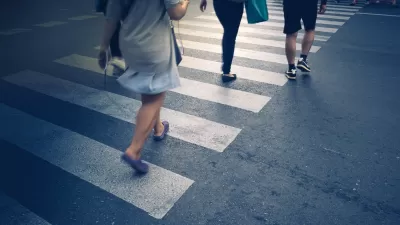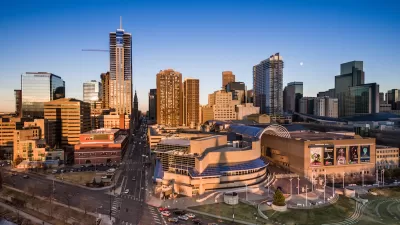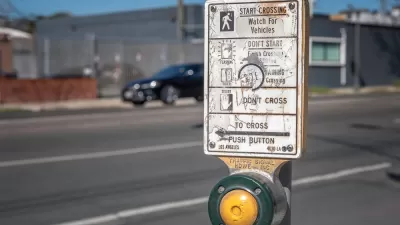Pedestrian deaths reached a four-decade high last year, signaling the failure of Vision Zero policies in most U.S. cities.

Estimates of nationwide pedestrian deaths by the Governors Highway Safety Association indicate that “U.S. walkers will have experienced a stunning 77-percent increase in deaths since 2010, rising at a rate more than three times faster than the rest of the traveling public, for whom fatalities increased 25 percent over the same period,” according to a Streetsblog article by Kea Wilson.
Planetizen readers should be all too familiar with this refrain. In 2021, U.S. pedestrian deaths broke the previous 40-year record, while 2020 saw the highest number of deaths in three decades. “In all three years, the GHSA noted that large arterials designed to prioritize vehicle speed, large vehicles, and dark road conditions were disproportionately common factors in fatalities — and in the absence of urgent action to address those systemic factors, safety officials are begging drivers themselves to be more careful.”
The findings come as the National Highway Traffic Safety Administration (NHTSA) is working to revise its vehicle safety rules to include a focus on pedestrian safety. So far, the agency has proposed adding a pedestrian safety rating to vehicles and instituting an Automatic Emergency Braking rule. Wilson notes that this rule doesn’t include “important companion technology like Intelligent Speed Assist systems that would prevent vehicles from reaching the deadly velocities at which braking systems are no longer effective.”
There may be one bright spot outside of the GHSA report, Wilson adds: “according to new preliminary estimates from NHTSA released the day before, traffic fatalities actually fell by about 3.3 in the first quarter of 2023, compared to the same period the year prior.” Wilson notes that this number doesn’t break out pedestrian deaths.
FULL STORY: Pedestrian Deaths Set a Four-Decade Record in 2022 (Yes, Again)

Planetizen Federal Action Tracker
A weekly monitor of how Trump’s orders and actions are impacting planners and planning in America.

Map: Where Senate Republicans Want to Sell Your Public Lands
For public land advocates, the Senate Republicans’ proposal to sell millions of acres of public land in the West is “the biggest fight of their careers.”

Restaurant Patios Were a Pandemic Win — Why Were They so Hard to Keep?
Social distancing requirements and changes in travel patterns prompted cities to pilot new uses for street and sidewalk space. Then it got complicated.

Platform Pilsner: Vancouver Transit Agency Releases... a Beer?
TransLink will receive a portion of every sale of the four-pack.

Toronto Weighs Cheaper Transit, Parking Hikes for Major Events
Special event rates would take effect during large festivals, sports games and concerts to ‘discourage driving, manage congestion and free up space for transit.”

Berlin to Consider Car-Free Zone Larger Than Manhattan
The area bound by the 22-mile Ringbahn would still allow 12 uses of a private automobile per year per person, and several other exemptions.
Urban Design for Planners 1: Software Tools
This six-course series explores essential urban design concepts using open source software and equips planners with the tools they need to participate fully in the urban design process.
Planning for Universal Design
Learn the tools for implementing Universal Design in planning regulations.
Heyer Gruel & Associates PA
JM Goldson LLC
Custer County Colorado
City of Camden Redevelopment Agency
City of Astoria
Transportation Research & Education Center (TREC) at Portland State University
Camden Redevelopment Agency
City of Claremont
Municipality of Princeton (NJ)





























